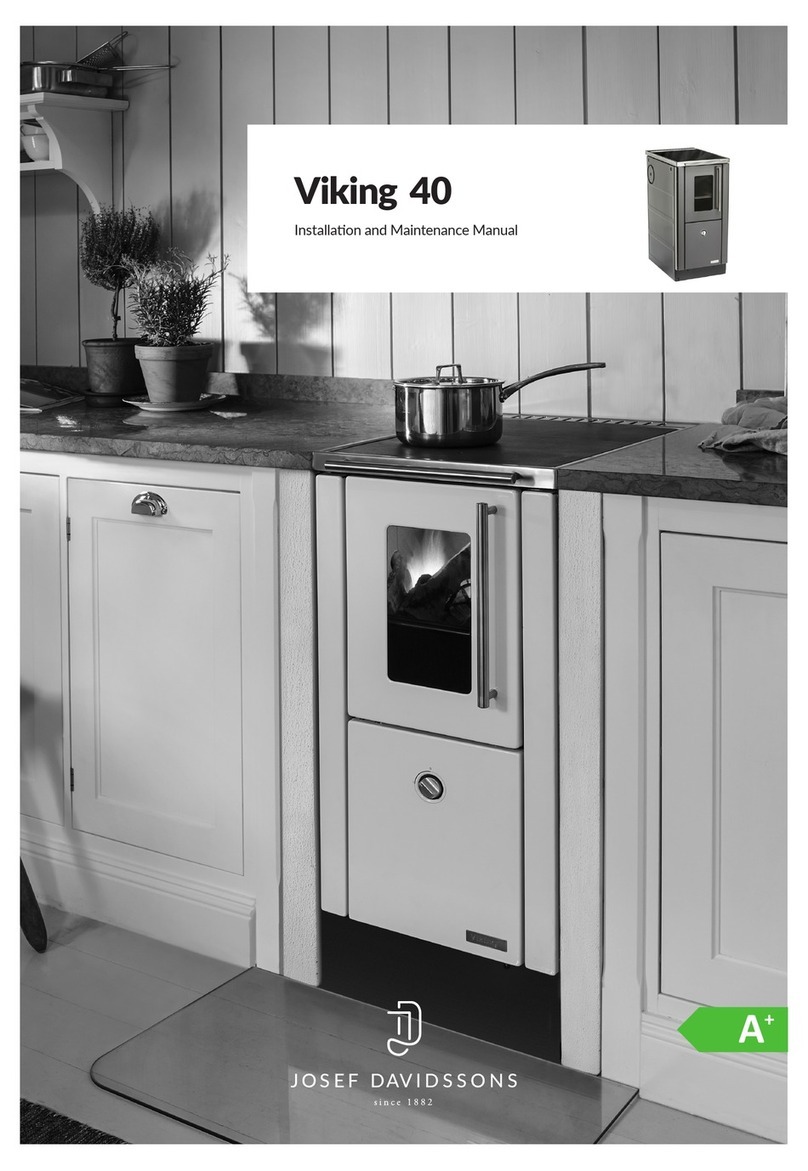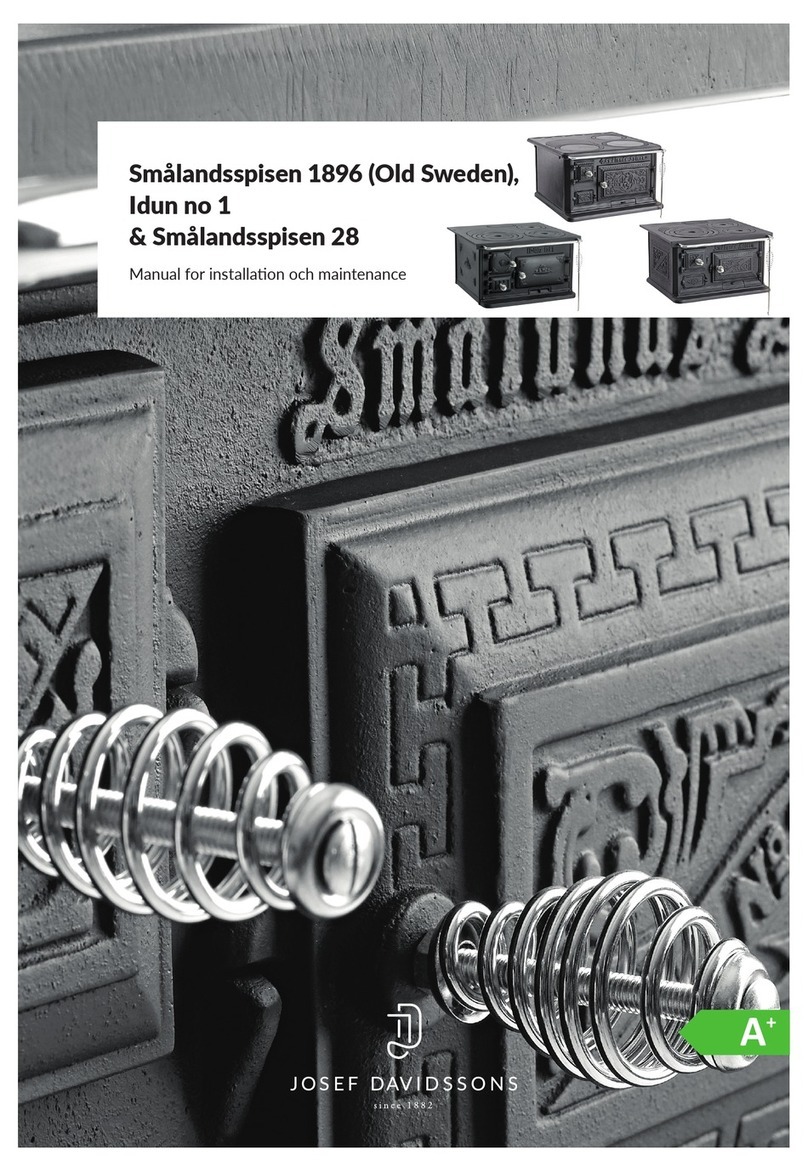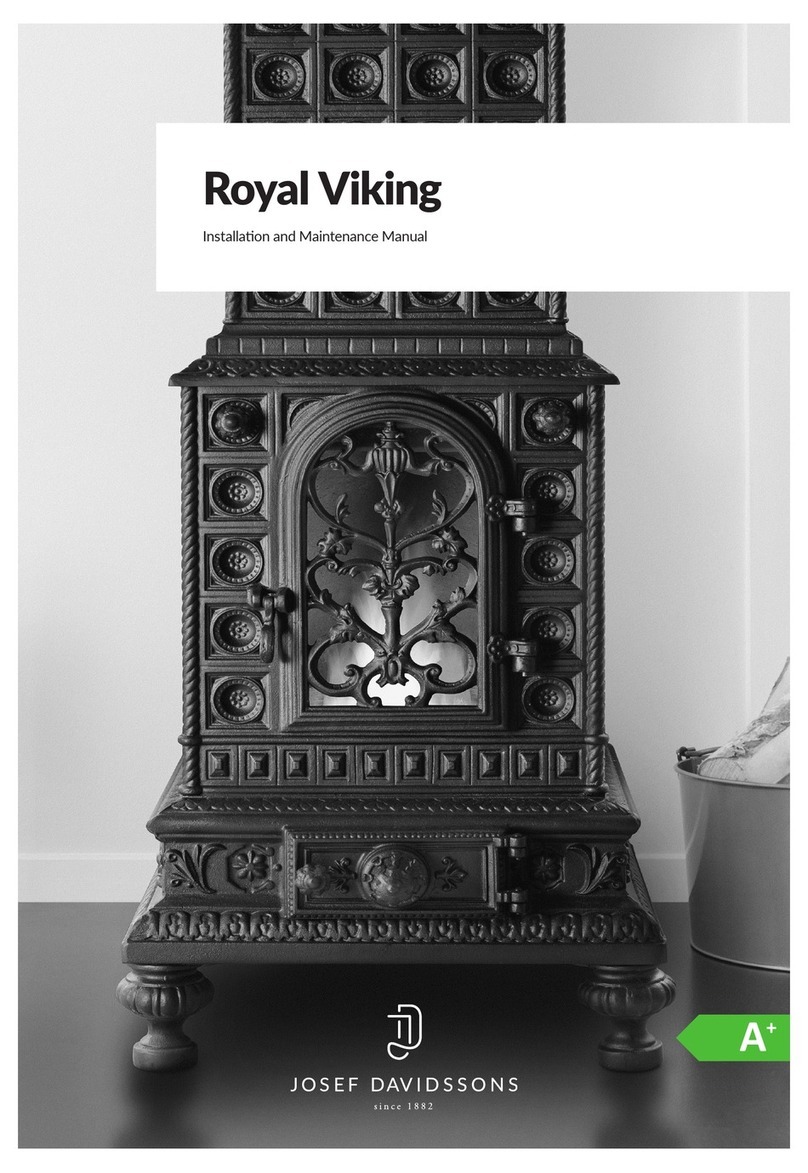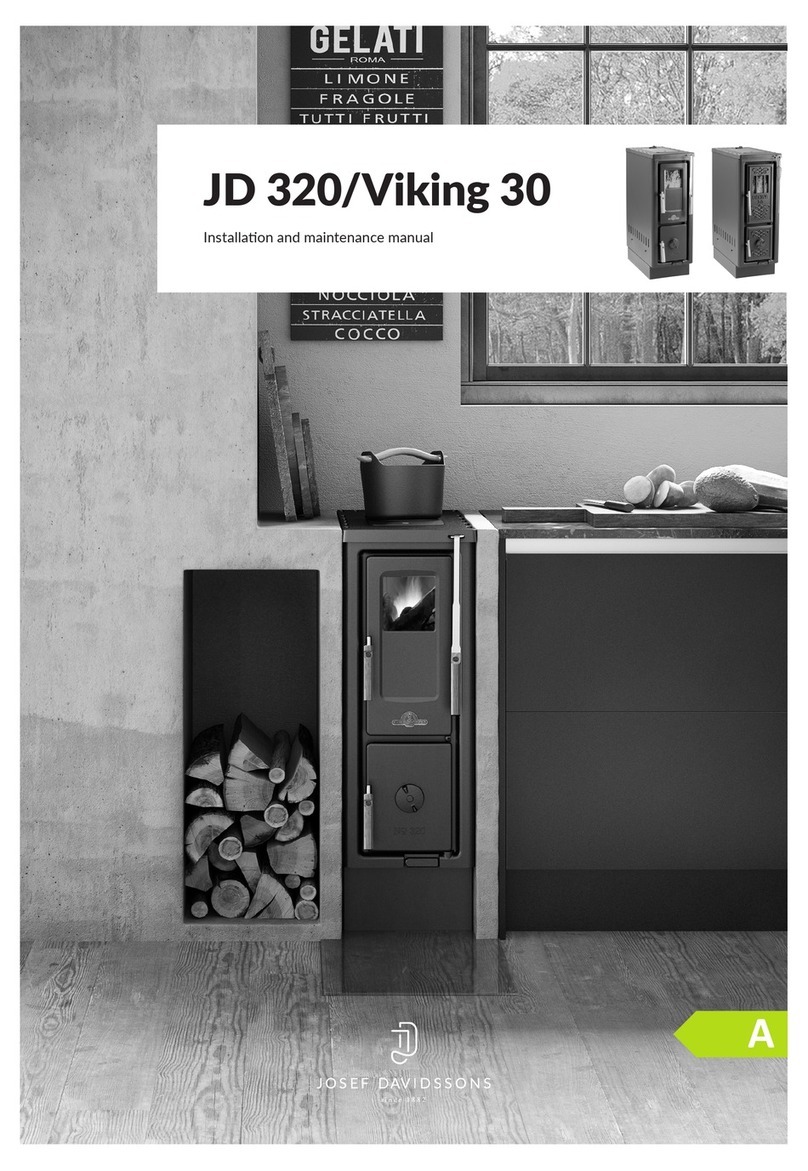In order to make the most out of your stove, please see to it that it is:
1. Properly installed
2. Properly fired
3. Properly maintained
Preparations
Manufacturer’s declaration
This product has been manufactured in
accordance with the documents that constitute
the basis for product certification wherein the
installation- and maintenance instructions are
integrated.
General information
The Smålandsspis 28 is manufactured of sturdy
cast iron. The housing of the fireplace is
protected by internal cast iron side walls. The
recessed grate forms the bottom of the
fireplace. Smålandsspis 28 is equipped with an
oven and on the top of the stove there are 3
removable cooking plates. Thanks to the heat
storing materials, the heat retention lasts for
hours after the fire has gone out. The stove is
tightened with soapstone cement and is being
kept together by 4 threaded bars, one in each
corner, fastened with a screw cap at the top
and with a nut under the base plate of the
stove. The fireplace door is covered with a
protection against overheating. The fact that
the fireplace door is tightened with a fire fast
sealing strip and that preheated secondary air is
being added to the fireplace through the holes
in the internal side walls to speed up the
combustion, a maximum of heating effect and a
minimum of wood consumption are achieved.
To make sure that primary air is being added to
the fire, keep the fireplace door slightly open
during the lighting process and stoking process.
It may be necessary for you to apply for building
permission from your local planning authority
before installing a stove or erecting a chimney.
Before starting installation work, make sure that
you check which regulations apply.
We would
advise you to get in touch with your local
chimney sweeper already at the planning stage
of the installation.
Before the stove is used, it must be inspected by
an authorized chimney sweeper or relevant
authority to verify that the installation is proper
made according to the installation instructions
and that the connection to the chimney is tight.
This inspection must be carried out before using
the stove disrespectable of if it refers to a
connection to an existing or to a new chimney.
Please, be aware that no kitchen ventilator or
similar device should be used in the same room
during the firing in the stove.
Warning!
When the stove is in use certain surfaces
become very hot, more than 90
o
C. Physical
contact with these surfaces can cause skin
burns.
Please be aware that the fireplace door and the
ash-pan are to be kept closed with the
exception of the lighting and stoking processes.
Modification of the stove is not allowed.
Chimney
The diameter of the chimney flue must be
minimum 125mm, and have a draught of at
least 0,12mbar. The shortest recommended
length of the chimney flue is minimum 3,5m,
measured from the connection point at the
stove. There are two different designs of
Smålandsspisen28, rear or top connection to
the chimney flue.
The stove designed for rear connection is
equipped with an oval fabric mounted flue
connection tube. Enclosed with the delivery
there is an oval tube connection made of cast
iron intended to be connected
to the brick-lined chimney. Use the enclosed
cement inside this connection and also inside
the fabric mounted connection. The stove is
now ready to be connected to the bricked
chimney.
The stove designed for top connection has a
top with a round flue connection tube to which
a flue pipe with a diameter of 125 mm is to be
connected. Round flue pipes for top connection
are to be ordered separately and are to be
sealed with stove cement.
Structural support
Normally, a kitchen stove and a (light-weight)
chimney can be located on standard wooden
floor joists in a single-family house.
Smålandsspisen Mod. 28 requires a floor plate
under, in front off and at the two sides of the
stove. Minimum protection in front of the stove
is 0,3m and 0.1 mm at both sides. Floor plates
are available as accessories.































